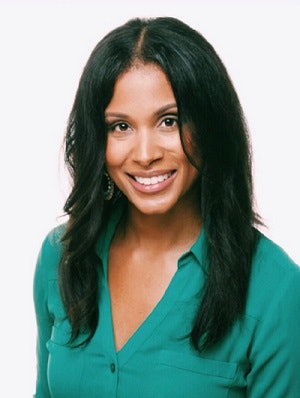Shawntae Jones was born and raised in Kansas City, Missouri. She went to the Paseo Academy of Fine and Performing Arts for creative writing. Now, she’s serving as the first director of talent and inclusion at Kansas City Art Institute.
She began her role on Aug. 31, in the thick of a pandemic and a national reckoning with racism after Black Lives Matter protests this summer.
Her role is to launch a “coordinated effort to look at how we can do better,” consolidating the diversity initiatives coming out of individual departments into a unified vision, said Kansas City Art Institute’s Nerman Family President Tony Jones. She “directs the traffic” and will lead the institution in “recruiting great staff and keeping great staff.”
 Shawntae Jones
Shawntae JonesOnly a month on the job, she’s “commanding the confidence” of her colleagues, he added.
Jones earned her master’s degree in human resource management from Webster University and her bachelor’s degree in psychology from the University of Missouri-Kansas City. She previously worked for Hallmark Cards for six years, serving on the Hallmark African American Leadership Council for two years as professional development chair.
For Jones, there’s something special about working at the intersection of diversity and the arts in her own hometown.
“I am a minority woman,” she said. “I grew up in this Black community … I went to an arts school here in Kansas City. I feel like now is my opportunity to pave the way for other young adults who look just like me. They’re growing up in the community that I grew up in and that I still live in.”
When Jones steeled herself to apply for this position, she recognized that her job would mean constantly fostering and engaging in “difficult conversations,” which came with some trepidation.
But then “I thought what an awesome opportunity to move into a role where I have the ability to influence the important work that needs to be done,” she said. “Here is my opportunity to really be a champion for diversity.”
During her first year, Jones’ main goal is to develop hiring practices that attract underrepresented faculty and staff.
“We want [students] to be able to have mentorship and have those shared life experiences and shared backgrounds with people who look like them,” she added. “It’s our responsibility to create that culture that is reflective of our community and our society.”
Jones will also be co-leading the IDEAS committee, which stands for inclusivity, diversity, equity, access and sustainability. The committee – made up of students, faculty and staff – will devise an action plan for integrating diversity and inclusion into the art institute’s curriculums. The plan will ultimately be presented to the school’s executive leaders.
In the long term, she wants to “foster a sense of belonging” for minority faculty, staff and students – new and old.
Students of color are “steadily increasing,” she said, a sign “we must be doing something right whether we know it or not.” At the same time, the number of minority faculty remains “super low,” less than 10%. She hopes to see it rise to 25%.
She emphasized that these goals won’t be the work of just one committee – or last only as long as this current upsurge in national activism. It’s a process the Kansas City Art Institute has been and will continue to embark on together as a community, she said.
“It’s not about this one particular moment in time,” she said. “It’s about a commitment to ongoing training and a commitment to having those difficult conversations to bring about positive change on our campus and in our communities, building that path forward.”
Jones pointed to how the institution’s social practice minor encourages students to engage with “current political and social challenges.”
“Arts traditionally has played a very central role in social movements and social activism in our country,” she said. “Our students, faculty and staff are socially-justice minded.”
For her, that’s part of why investing in diversity, equity and inclusion work in arts higher education feels so important – art is a powerful tool for social justice. She’s already seen students’ “passion reignited” by the protests and manifested in their writing and their artwork.
“It’s going to be amazing to see the art that comes out of this moment and looking at how people express themselves in the work that comes out on the campus,” she said. “Artists are just creative people. They create culture. There are going to have to be courageous kids who come forward and speak up for how they feel, and they will help us create the culture that we want on campus.”
Sara Weissman can be reached at [email protected].





















